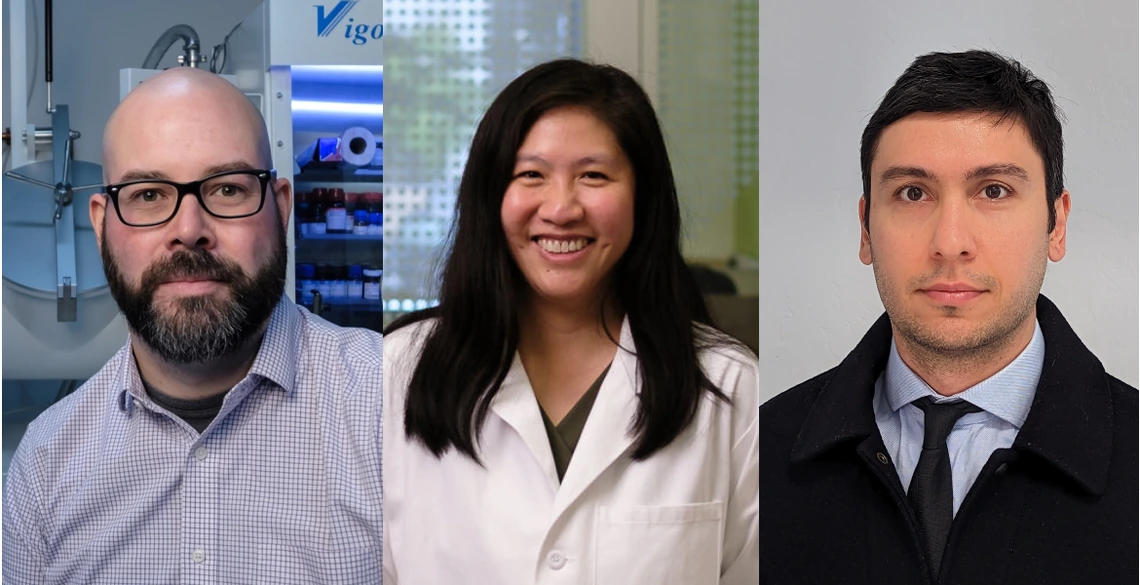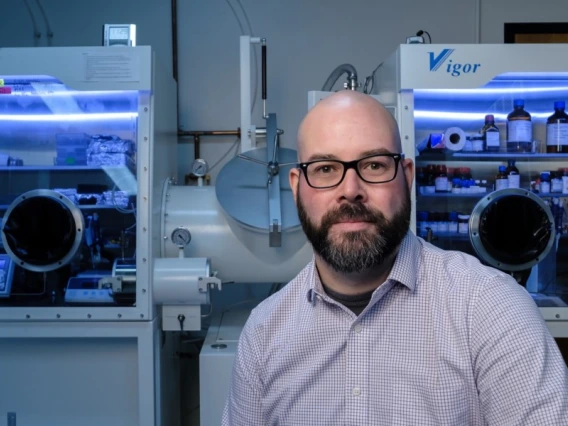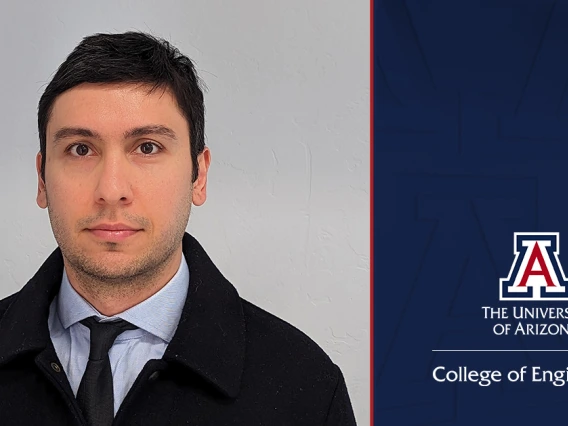Three University of Arizona Engineers Win NSF CAREER Awards
Three UA College of Engineering professors have received the National Science Foundation’s CAREER Award, the organization’s most prestigious honor for early-career faculty.

Adam Printz, Judith Su and Nima Toosizadeh received 2023 CAREER Awards from the National Science Foundation
Adam Printz – Advancing Lightweight, Low-Cost Solar Technology
Adam Printz, an assistant professor in chemical and environmental engineering, is an expert in perovskite-based photovoltaics, a form of solar power generation that uses ultrathin materials printed onto flexible plastic substrates. The technology is promising, but not yet commercially viable because it exhibits chemical and mechanical instabilities. Printz is investigating the role of molecular strain in causing these instabilities and seeking ways to mitigate them.
“Perovskite-based photovoltaics are exciting because they can be printed like newspapers and only require a small fraction of the material used in traditional photovoltaic technologies,” Printz said. “Less material usage reduces costs and waste, meaning that long-term, perovskite-based photovoltaics are an attractive replacement for current technologies.”
Read more about Adam Printz’s NSF CAREER Award
Judith Su – Building a Bioinspired ‘Optical Sniffer Sensor’
Judith Su is a professor of biomedical engineering, optical sciences and the BIO5 Institute. She is also the inventor of FLOWER, an optical sensing platform that can detect ultra-small quantities of “anything worth sensing,” including disease particles and toxic chemicals. By combining FLOWER with hypersensitive olfactory receptors, she is developing a bloodhound-like optical nose to detect volatile organic compounds. VOCs are compounds with high vapor pressure at room temperature that emit odors.
“Your olfactory receptors have been refined over thousands of years of evolution for the purpose of detecting these odorants,” Su said. “People haven’t really been able to use them in combination with sensors before because it’s a challenge to produce them and keep them in working form.”
Read more about Judith Su’s NSF CAREER Award
Nima Toosizadeh – Developing a 1-Minute Frailty Testing Platform
Nima Toosizadeh, an assistant professor of biomedical engineering and medicine, is developing a more practical way to diagnose frailty, or patients’ reduced ability to tolerate stress. Existing diagnostic methods include a lengthy questionnaire and set of physical tasks, which can be impractical in clinical settings. In Toosizadeh’s method, an older patient is equipped with sensors to measure motor, heart and brain functions, then tasked with bending and straightening an arm for less than a minute.
“It’s just bending the elbow,” said Toosizadeh, who joined the university as a postdoctoral researcher in 2013 and became a faculty member in 2017. “The whole point is to make it easy for the clinicians and patients to do.”
Read more about Nima Toosizadeh’s NSF CAREER Award.




